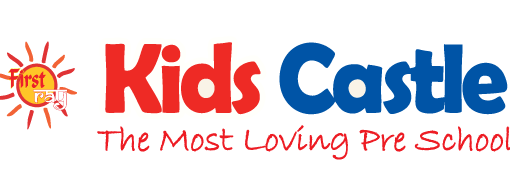Remember when you used to save a few pennies to buy candies from your neighbourhood shop, and convince your parents to buy the toys you wanted so badly. The times have changed; the upcoming generation is growing up in entirely different surroundings that you weren’t acquainted with as a child. The covid era greatly influenced how toddlers and young
children grew up in their peak development stages.
Children nowadays get everything they want as soon as they ask for it, so teaching gratitude can be an uphill battle for parents. But stress not, this article will give you a comprehensive outlook on embedding gratitude in children.
Gratitude Starts at Home
While teaching gratitude is a long journey, the most important thing to remember is that children learn from their surroundings. For the majority part, it’s the family they are around, and looking up to their parents and grandparents is obvious; hence the gratitude journey starts at home first. It’s how they see their parents talk, behave and act with other family
members or the public. Children pick up these behavioural cues from their parents, which primarily shapes their gratitude journey and shapes them as a human.
Saying “Thank You”
Parents can encourage their children to foster gratitude by encouraging them to say thank you or say thanks in ways beyond words. They can be thankful for even the simplest gestures shown to them by others. Gentle reminders like, for example, “If the sibling gives them the first plate of breakfast, what would you say to them,” or “If grandma gives them a chocolate, what would you say to her?”.
They can even return a good deed with a good deed as well. While the world is filled with grand gestures, let your children appreciate the little things people do for them. Encouraging them to express appreciation will be an essential learning path towards attaining genuine gratitude.
Thank you Notes
You can also encourage your children to write thank you notes to people who do something good for them or show them kindness. Your child can also make a greeting or create a DIY art project and gift it to a family member, friend or teacher they feel is important in their life.
Appreciation
Ensure that you appreciate your children whenever they display gratitude without any prompts from your side. Positive affirmation will reinforce the importance of showing gratitude towards people.
Ask your Kids Gratitude Questions
If your children now say thank you regularly without needing any prompts, you can explore a little more on the gratitude journey to ensure that your children are not just saying thank you due to social notions but saying it because they feel it. Let us see how we can take gratitude to a whole new level by incorporating more components.
Gratitude can be divided into four components:
Notice – Encourage your kids to notice or recognise what they are grateful for. For example, ask them questions like, “What are you grateful for in your life?”, “Are you grateful for anything beyond the gifts you have received” or “Which people are you grateful to have in
your life?”.
Think – When they receive a gift, encourage your kids to think about why they received a gift from family members or others. For example, ask them questions like, “Why do you think you received the gift?”, “Do you think you should give something in return to the person who gave this gift to you?”, “Do you think you have earned this gift?” and more questions like
these.
Feel – Ask your kids how they feel or experience after receiving a gift. For example, ask them questions like, “How do you feel about receiving a gift?”, “How did it feel from inside when they complimented you?” or “Did the gift make you feel happy?” and more questions like these.
Do – Encourage your kids to express appreciation. For example, ask them questions like, “Is there any way to tell or show the person how you felt about their gift?”, “Do you feel like sharing or showing the gift you received with someone?” and more such questions.
These four components Notice-Think-Feel-Do will help take your child’s gratitude journey to
a whole new level.
Help someone in need
Growing up, children must understand that not everyone grows up with a loving family around them, a roof over their head or have good friends for support. That’s why children need to learn to give back to society. Talk to them about poverty and help them understand that not everybody grows up with the same privileges and how important it is to help somebody in need of help. Take your children to donation camps or shelters and donate food, clothes or medical help to kids or families in need. Your kids will watch you do the good deeds and learn from you the same.
A Gratitude Jar
Encourage your children to think of something they are grateful for at the end of every day. They can write it down on a slip of paper and put it into the gratitude jar.
You can take up this activity before bedtime or after dinner and ask them how their day was and what they were grateful for today. It can be anything, be it getting a good grade or celebrating somebody’s birthday or how someone helped them by offering a pencil or sharpener when they needed it.
At the end of the year, your family can sit down, look through all the notes, and reflect on the good things that happened throughout the year. This way, your children will know how much there is to be grateful for, even on bad days.
We hope this article will help you and your children on the gratitude journey.

